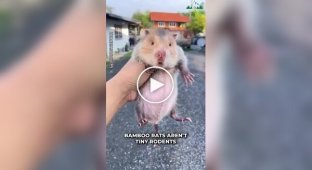Unique historical footage that will take you back in time (21 photos)
The 19th century is characterized by such phenomena as protectionism, industrialization, urbanization, and the rise of colonialism. On the other hand, the 19th century was marked by unprecedented achievements in culture and art, as well as technology and science. 
Milk sellers. Brussels, Belgium, 1890s.
During the nineteenth century, dog sleds were widely used in European countries for transportation and for their own needs. There was a severe shortage of horses in Belgium and by the 1920s there were about 15,000 dog sleds in the country.
In other countries the attitude towards dog sleds was completely different. In France, for example, by the end of the 19th century, using dogs was punishable by a large fine and 5 days in prison. In England and Italy, this type of transport was banned. 
Lausanne, Switzerland, 1870s.
In the 19th century, Lausanne experienced a rapid economic boom during industrialization. That is why it is so densely built up. Now it is a very beautiful and green city. 
A cowboy brands a cow on a ranch. Nebraska, 1887.
Judging by the way the cowherd is holding the animal's head, he is most likely going to insert an open ring into its nose, a holder for a tag. There are also many other ways of branding, such as shaving the hair, inscriptions with paint, tattoos, a collar, etc. 
Photographer: Solomon Butcher
A group of peasant girls in everyday dress. Japan, 1880. 
A carriage passes through a cut-out opening in a giant sequoia, California, 1879.
In the past, attitudes toward nature and its resources were very different. 
Prostitutes for sale behind bars in a brothel. Japan, 1890.
The girls are probably from Korea or China. Most of them are there because their parents or husbands sold them for debt. 
Passengers on the outskirts of the English capital travel by horse-drawn tram. London, 1882.
The carriage was harnessed by a pair of horses and could accommodate 20 seated passengers and 12 standing and holding on to special loops. 
Snake charmers. Ceylon (Sri Lanka), 1880s.
Cobra charmers have been common in Sri Lanka since ancient times. The fakir played the flute, and the cobra rose from the basket and moved to the beat, after which the hypnotized snake looked at the fakir's wand for several hours. 
Chinese railroad workers pose for a photograph near Vancouver, Canada, 1874. As cities grew on the West Coast, the Chinese began to come to North America in large numbers in search of work and a better life. Mining and railroad companies often hired them as cheap labor, no questions asked. These people were hired by the Canadian Pacific Railway. 
A young shoe shiner, 1870s.
A poor boy who helped support his mother and disabled father shined shoes while waiting for his meager pay. 
Colorado miners, 1895. 
Gibraltar, 1850-1890. 
Photographer: George Washington Wilson
Japanese archers, circa 1870-1880.
The photo shows a classic asymmetrical Japanese bow. The handle does not divide the bow in half. They say this design increases the tension of the bowstring. The Tatar-Mongols have shorter bows, which is more convenient for shooting from horseback, and the bow itself is composite, wood with bone inserts for elasticity. 
Three children sift sand in a gold mine in Dominion Creek, Yukon, Alaska, 1898. 
Buddhist priests. Ceylon (Sri Lanka) in the 1880s. 
Komuso (monks of emptiness) in Japan, 1887.
The distinctive feature of such monks was the practice of suizen in the form of playing the shakuhachi, which is a long Japanese flute made of bamboo, and a large reed hat tengai, which completely covered the head. 
A pendant for the treatment of scoliosis. London, 1877. Professor Lewis Sayre treats scoliosis by checking the curvature of the spine on his apparatus. 
The Snake Charmer. Martinique. French colonial empire, 1900. 
A settler family on the American prairie in the 1880s. 
A Victorian lady with long hair, 1890s.
Caring for such long hair required a lot of time. After all, shampoo would not be invented until the end of the century, and it would become popular at the beginning of the 20th century. All possible oils and balms and special brushes were used to maintain such hair. 
























